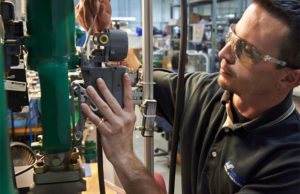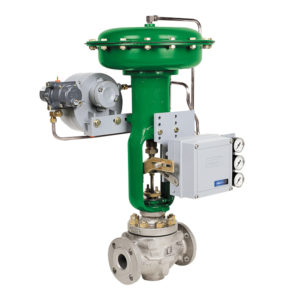 More and more companies are recognizing that buying remanufactured instruments is a smart, practical business decision. However, there is still loads of confusion surrounding the remanufacturing process, and, more importantly, remanufactured products.
More and more companies are recognizing that buying remanufactured instruments is a smart, practical business decision. However, there is still loads of confusion surrounding the remanufacturing process, and, more importantly, remanufactured products.
Here are a few common fallacies:
- Remanufactured products aren’t reliable.
- Remanufactured products don’t carry a good warranty.
- Remanufactured products aren’t tested to industry standards.
Although purchasing remanufactured equipment comes with innumerable benefits, it’s misconceptions like these that can make decision-makers take pause. But before we dive into debunking some of these myths, let’s flesh out what the remanufacturing process entails.
What is remanufacturing?
Remanufacturing, rebuilding, refurbishing, reconditioned, repairing — when it comes to valves and instrumentation, these words are often used as synonyms. But they’re not (at least for the most part).
Here’s a quick overview of each of the terms.
- Repairing is the obvious one. It simply means fixing what’s wrong.
- Refurbishing is the redistribution of used products that have been returned to an OEM. Refurbished products are often, but not always, tested for functionality.
- Reconditioning, or rebuilding, involves disassembling a product down to its component parts, cleaning the parts and replacing them if necessary, and then reassembling the same product.
- Finally, remanufacturing involves breaking a part down into its individual components, restoring each usable element, and placing the parts into stock. Later, those parts are used to create newly specified products. These products are manufactured to published OEM specifications and thoroughly tested.
Using valves as an example, this is what the remanufacturing process looks like:
- Step 1: Completely disassemble the valve
- Step 2: Check working parts for signs of wear and tear, ensuring each part meets published manufacturer standards
- Step 3: Sandblast all castings, inspecting for possible defects
- Step 4: Face all sealing surfaces to a new finish
- Step 5: Replace all wetted materials and critical hardware
- Step 6: Paint and reassemble the valve
- Step 7: Test the valve
See the process in action in the video below.
With an idea of what the remanufacturing process looks like, let’s dig into some of the points of confusion surrounding the topic.
Debunking Common Myths About Remanufactured Equipment
Myth #1: Remanufactured products aren’t reliable.
This is the biggest misconception surrounding remanufactured equipment. It’s also completely wrong.
Remanufacturing is a meticulous process during which a technician carefully cleans, inspects, and tests the main components of a reclaimed instrument. If any element doesn’t pass performance or functional testing, it won’t be used in the final remanufactured product.
Since every part of a remanufactured instrument endures rigorous functionality tests, you can rest assured that any reman product you purchase from Automation Service will meet your specifications.
Myth #2: Buying remanufactured instruments isn’t cost-effective.
Remanufacturing offers you multiple ways to save money.
First, buying remanufactured instruments rather than new can save you up to 70%. Plus, by participating in our recycling program, your department can earn budget-boosting credits that you can use toward future purchases. Participation also includes you in our exclusive Reclamation Road Trip program that rewards the whole team for recycling.
Myth #3: Remanufactured instruments don’t go through rigorous testing, so they won’t meet my performance standards.
Remanufacturers follow published OEM policies strictly so that they can consistently create reliable end products. As such, remanufactured instruments go through rigorous testing that assures quality and performance.
For example, our remanufactured Fisher® control valves are hydrostatic and seat leak tested to ANSI/ISA standards. Further, we check all of our actuator springs for proper spring rating, and we use a Niton™ XL2 Analyzer to verify all trim materials.
Learn more about the testing and validation process in this article.
Myth #4: Remanufactured equipment doesn’t come with a warranty.
Remanufactured instruments generally come with solid warranties, which can be twice what you’d get with a new product. Automation Service offers a full 2-year warranty that begins on the installation date.
Myth #5: The parts I need don’t come remanufactured.
As we mentioned before, remanufacturing involves complete disassembly of reclaimed devices. Generally, engineers and technicians don’t reassemble the original instrument after all of that. Instead, the newly cleaned and inspected parts enter inventory.
With access to this vast stock of individual parts, remanufacturers can custom-build instruments based on each customer’s unique process requirements.
Myth #6: The lead times for remanufactured products are too long.
Lead times for remanufactured equipment can be very short! Since remanufacturers often have an extensive inventory of parts, they can respond swiftly to requests and get instruments out the door in no time flat. At Automation Service, we can ship an express order in as little as two days.
Myth #7: Remanufacturers don’t have specialized knowledge of the equipment they rebuild.
In order to respond to the unique needs of each customer, it’s critical that remanufacturers have a deep understanding of not just the remanufacturing process, but of the industry in which they serve and their customers’ processes. At Automation Service, you’ll find highly-skilled engineers and technicians with extensive knowledge of process controls, transmitters, and more.
Myth #8: Installing one remanufactured instrument among my factory new equipment will compromise my processes.
When you purchase from remanufacturers that have a proven track record, there’s no need to worry about incorporating remanufactured instruments into your process line. They will work seamlessly with your factory new instrumentation.
Automation Service also has skilled technicians and engineers on staff to help you choose the proper instrument or help with installation and start-up.
More benefits to buying remanufactured
Hopefully, we’ve addressed all of your concerns about buying remanufactured instruments. If you’re still not convinced, here are three more benefits to buying remanufactured goods:
- Remanufacturing is good for the economy. By 2011 (the most recent year for which data are available), the value of US remanufactured production had reached a whopping $43 billion, and the industry supported about 180,000 jobs.
- Remanufacturing is good for the environment. By giving equipment components new life, remanufacturing keeps materials out of landfills longer. It’s the ultimate form of recycling! And generally, since remanufacturing doesn’t require as many raw materials, the process doesn’t use as much energy as the manufacturing process.
- Remanufacturing is good for your budget. You can purchase remanufactured goods for a fraction of the cost of new.
—
Ready to get started with remanufactured equipment? Contact us today at (800) 325-4808.

